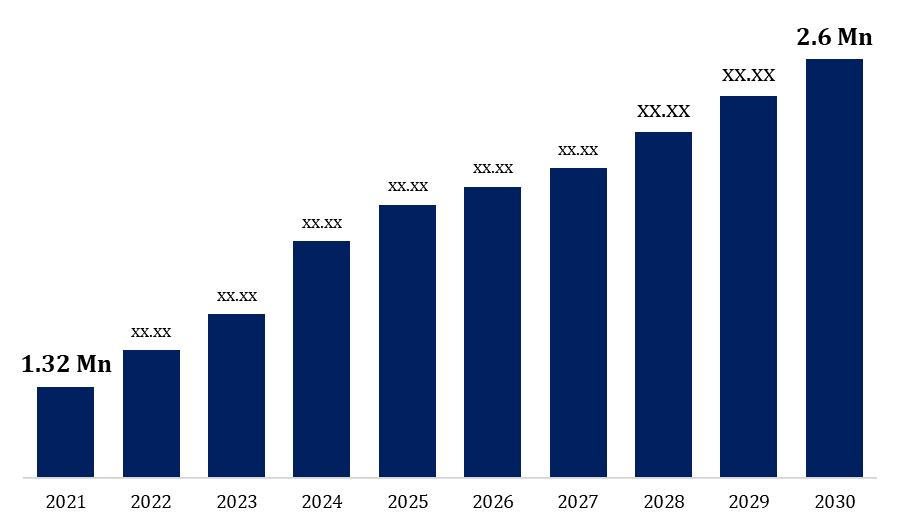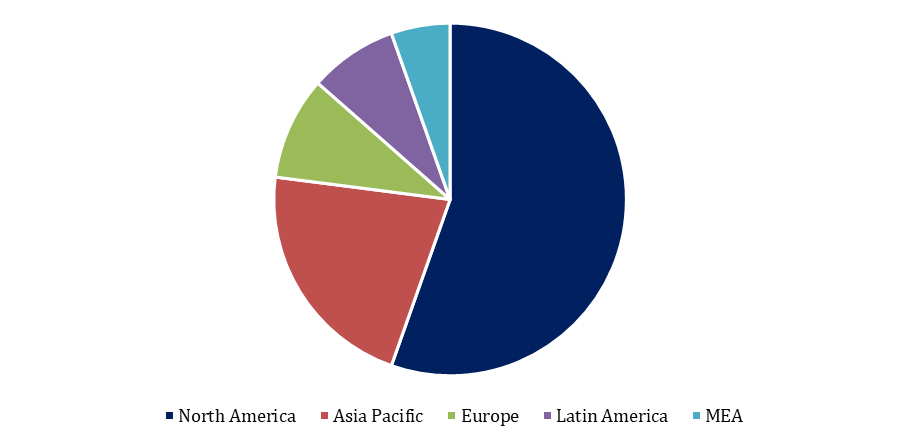Global Anti-aging Ingredients Market Size To Grow USD 2.6 Million By 2030 | CAGR of 8.1%
Category: Chemicals & MaterialsGlobal Anti-aging Ingredients Market Size To Grow USD 2.6 Million By 2030
According to a market statistics analysis report, the Global Anti-Aging Ingredients Market size is set to surpass USD 2.6 million by 2030, according to a new research report published by Spherical Insights & Consulting.
The report identifies that the anti-aging ingredients are expanding as businesses in the anti-aging sector concentrate primarily on producing high-quality products to meet the rising demand from customers worldwide. Sales of anti-aging treatments are being boosted by the rising use of useful items to cover skin aging and wrinkles. The market is expanding favorably due to technological developments in product manufacturing, increased market participants, and research and development efforts to identify the best components for anti-aging products. Healthcare professionals and product makers working together can assist the anti-aging market in overcoming its problems. However, factors impeding the growth of the global market include the high cost of raw materials utilized in the production of anti-aging products and the scarcity of natural components.

Get more details on this report -
The overall market statistics will increase as liquid-based anti-aging chemicals are increasingly used.
Liquid-form anti-aging ingredients are anticipated to grow 15% during the forecast period. The key driver driving the need for anti-aging products, which is accelerating the use of anti-aging chemicals in liquid form, is the rising consumer demand for anti-aging remedies combined with rising lifestyle standards & incomes among the middle-class population. The need for liquid-based anti-aging components will also increase as liquid-based anti-aging products, including lotions, creams, and serums, become increasingly popular.
The rising demand for sunscreen chemicals will improve the environment for the entire business.
The anti-aging ingredients segment's sunscreen market is projected to grow at 12% through 2030. Increased developments have influenced the emergence of dioxybenzone on the market in skin cancer chemoprevention. The market inclination is helped by the simple addition to several sunscreens and the continually expanding sunscreen market. Furthermore, the increased use of grooming products, such as after-shave, infant sunscreen, body firming lotions, and body oils, has driven the oxybenzone demand. Manufacturers will increase demand for sunscreen ingredients by introducing UV filter-based products depending on individual skin types and changing climatic circumstances. Additionally, the rise of the sunscreen components market is driven by rising awareness of the value of sun protection and the occurrence of skin cancer and other disorders brought on by ozone layer depletion.
Increasing consumption of cosmetics boosts the anti-aging ingredients market.
Cosmetics anti-aging ingredients are anticipated to grow 15% during the forecast period. The global industry for cosmetics and anti-aging goods is being driven by consumers of all ages' raising awareness of their own physical appearance. A healthy physical personality is a need for success in many facets of life, which supports the use of anti-aging products that can slow or stop these changes. Additionally, the demand for cosmetics has increased globally due to the quickly rising youth population and rising disposable incomes, which drives the statistics for the entire sector. Global sales of cosmetic anti-aging products are rising due to an increase in the senior population, particularly in emerging economies.
Browse key industry insights spread across 189 pages with 137 market data tables & 33 figures & charts from the report, “Anti-Aging Ingredients Market Size By Form (Powder and Liquid), By Product (Chemical Peels, Hyaluronic acid, Retinol, Sunscreen, Peptides, Niacinamides, Antioxidants, and Others), By Application (Nutraceuticals and Cosmetics), COVID-19 Impact Analysis, Growth Potential, Regional Outlook, Competitive Market Share & Forecast, 2021 – 2030” in detail along with the table of contents: https://www.sphericalinsights.com/reports/anti-aging-ingredients-market
Asia Pacific region emerges as a prominent revenue pocket.
Asia Pacific’s anti-aging ingredients market accounted for USD 0.46 million in 2021. The market for anti-aging ingredients in the Asia Pacific region has been expanding because there are more elderly people. South Korea, Japan, and China have seen an increase in the amount of money spent on the use of these treatments that can remove the tell-tale symptoms of lines and wrinkles. Additionally, the expansion of this region in the anti-aging ingredients market is due to the increased product availability and increased access to numerous domestic and foreign brands through e-commerce.

Get more details on this report -
The Europe market is expected to grow at a significant CAGR over the forecast period, owing to the population that is fashion-conscious combined with an increase in spas and salons. In addition, the region's leading essential players in this sector, including L'Oreal, Beiersdorf, and Unilever, are concentrating on R&D efforts and the introduction of new goods. For instance, L'Oreal introduced the new revitalift filler hyaluronic acid serum in the UK in January 2020 as an anti-wrinkle treatment for different skin types.
Product launches to remain a key growth strategy
The strategic landscape of the anti-aging ingredients industry will observe an increase in demand as many people choose different skin care procedures and cosmetic enhancements to improve their skin's appearance, reduce pigmentation, repair UV damage, etc. A large portion of the market growth is being attributed to an older population on the rise and an increase in the number of market participants working in the global anti-aging industry to offer cutting-edge treatments for your skin.
Key participants operating in the anti-aging ingredients market are Procter & Gamble, PHYTOMER, Deka Corporation, Johnson & Johnson, Unilever Plc., Kao Corporation, ZO Skin Health, Inc., L’Oreal Paris, Shiseido Company Limited, Estee Lauder Companies, Inc., Beiersdorf, Allergan, BASF SE, and Dow Chemical Company.
Key Target Audience
- Market Players
- Investors
- End-users
- Government Authorities
- Consulting And Research Firm
- Venture capitalists
- Third-party knowledge providers
- Value-Added Resellers (VARs)
Recent Development
- In February 2021, HyRetin, a brand-new anti-aging and anti-acne therapy solution were introduced by Contipro. This tactic will increase the amount of anti-aging chemicals in its product line.
- In December 2019, Have & Be Co. Ltd, a global skincare firm with offices in Seoul and brands like Dr. Jart+ and Do The Right Thing for men's grooming, was purchased by Estee Lauder Companies, Inc.
Market Segment
This study forecasts revenue at global, regional, and country levels from 2019 to 2030. Spherical Insights has segmented the global anti-aging ingredients market based on the below-mentioned segments:
Anti-Aging Ingredients Market, By Type
- Powder
- Liquid
Anti-Aging Ingredients Market, By Product
- Chemical Peels
- Hyaluronic acid
- Retinol
- Sunscreen
- Peptides
- Niacinamides
- Antioxidants
- Others
Anti-Aging Ingredients Market, By Application
- Nutraceuticals
- Cosmetics
Anti-Aging Ingredients Market, Regional Analysis
- North America
- US
- Canada
- Mexico
- Europe
- Germany
- Uk
- France
- Italy
- Spain
- Russia
- Rest of Europe
- Asia Pacific
- China
- Japan
- India
- South Korea
- Australia
- Rest of Asia Pacific
- South America
- Brazil
- Argentina
- Rest of South America
- Middle East & Africa
- UAE
- Saudi Arabia
- Qatar
- South Africa
- Rest of Middle East & Africa
About the Spherical Insights & Consulting
Spherical Insights & Consulting is a market research and consulting firm which provides actionable market research study, quantitative forecasting and trends analysis provides forward-looking insight especially designed for decision makers and aids ROI.
Which is catering to different industry such as financial sectors, industrial sectors, government organizations, universities, non-profits and corporations. The company's mission is to work with businesses to achieve business objectives and maintain strategic improvements.
CONTACT US:
For More Information on Your Target Market, Please Contact Us Below:
Phone: +1 303 800 4326 (the U.S.)
Phone: +91 90289 24100 (APAC)
Email: inquiry@sphericalinsights.com, sales@sphericalinsights.com
Contact Us: https://www.sphericalinsights.com/contact-us
Frequently Asked Questions (FAQ)
-
What is the market size of the global anti-aging ingredients market?As per Spherical Insights, the size of the anti-aging ingredients market was valued at USD 1.32 million in 2021 to USD 2.6 million by 2030
-
What is the market growth rate of the global anti-aging ingredients market?The global anti-aging ingredients market is growing at a CAGR of 8.1% during the forecast period 2021-2030.
-
Which region dominates the global anti-aging ingredients market?The Asia Pacific emerged as the largest market for anti-aging ingredients.
-
What is the significant driving factor for the anti-aging ingredients market?Growing personal care product manufacturing and the increase in the share of the elderly population in the region will foster industry growth and will influence the market's growth.
-
Which factor is limiting the growth of the anti-aging ingredients market?The high cost of raw materials could hamper the market growth.
-
What is an opportunity for the anti-aging ingredients market?Changing lifestyle and increasing purchase power to drive market growth will provide considerable opportunities to the market.
-
Who are the key players in the global anti-aging ingredients market?Key players of the anti-aging ingredients market are Procter & Gamble, PHYTOMER, Deka Corporation, Johnson & Johnson, Unilever Plc., Kao Corporation, ZO Skin Health, Inc., L’Oreal Paris, Shiseido Company Limited, Estee Lauder Companies, Inc., Beiersdorf, Allergan, BASF SE, and Dow Chemical Company.
Need help to buy this report?